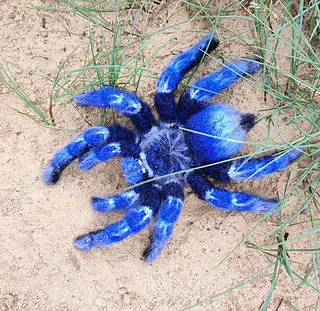Understanding the Cobalt Blue Tarantula
The Cobalt Blue Tarantula (Cyriopagopus lividus) is a stunning and captivating species, known for its vibrant blue coloration, particularly on its legs. Native to the tropical forests of Myanmar and Thailand, these tarantulas are popular pets among enthusiasts due to their striking appearance. However, their beauty comes with a degree of responsibility, as they require specific environmental conditions to thrive. Understanding their natural habitat and behaviors is the first step toward providing a suitable living space. This guide will help you create the perfect environment for your Cobalt Blue Tarantula to flourish, ensuring its health, happiness, and longevity. Before you get started on setup, be prepared for a fast, defensive species that is more prone to biting than other tarantulas.
Habitat Requirements
Enclosure Size and Type
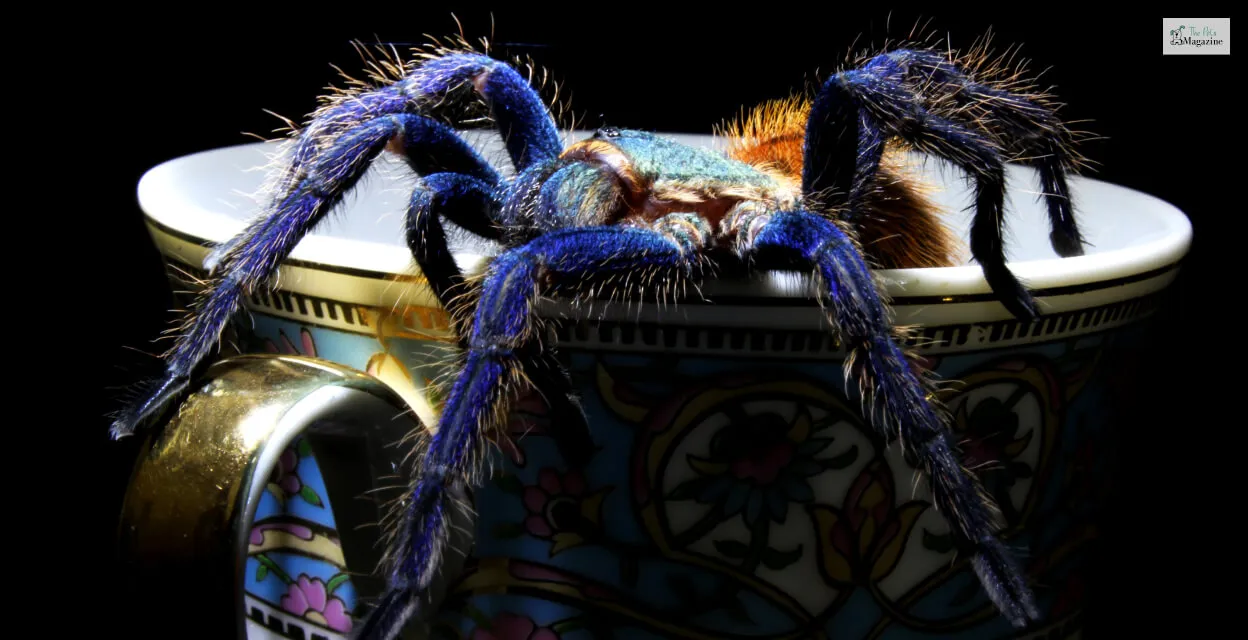
Choosing the right enclosure is crucial for the well-being of your Cobalt Blue Tarantula. A terrestrial species like this one requires a terrarium that prioritizes floor space over height. A good starting point for a juvenile tarantula is a terrarium that’s about 10 gallons, or roughly 12x12x12 inches. As your tarantula grows, you’ll need to upgrade to a larger enclosure, ideally around 20 gallons for an adult. The enclosure should be made of glass or clear plastic to allow for easy viewing and monitoring of your pet. Ensure the enclosure has a secure, escape-proof lid, as Cobalt Blues are known for their speed and agility. Avoid enclosures with screen tops, which can be difficult to maintain humidity levels in, and can be hazardous to the tarantula’s legs.
Substrate Selection
The substrate serves multiple purposes, including providing a comfortable surface for your tarantula, helping to maintain humidity levels, and allowing the tarantula to burrow if it chooses. A mixture of substrate options will work best. Coconut fiber (also known as coir) is an excellent base substrate due to its moisture-retentive properties. You can also add a layer of peat moss to help hold humidity. Avoid using substrates like sand or gravel, which can be difficult to clean and may not retain humidity well. The substrate should be deep enough for the tarantula to burrow, typically around 4-6 inches for an adult. Always make sure the substrate is clean and free of any chemicals or pesticides, as these can be harmful to your tarantula.
Importance of Humidity
Humidity is a critical factor in the Cobalt Blue Tarantula’s health and well-being. These tarantulas thrive in a humid environment, which helps them molt properly and stay hydrated. The ideal humidity level for a Cobalt Blue Tarantula is between 70% and 80%. You can achieve this by regularly misting the enclosure with dechlorinated water, especially in the drier months. Avoid oversaturating the enclosure, as this can lead to mold growth and other problems. Monitoring the humidity levels with a hygrometer is highly recommended to ensure the environment is within the proper range. Proper humidity promotes healthy molting cycles, which are essential for the tarantula’s growth and overall health. If humidity gets too low, molting can become very difficult or fail completely.
Temperature Control
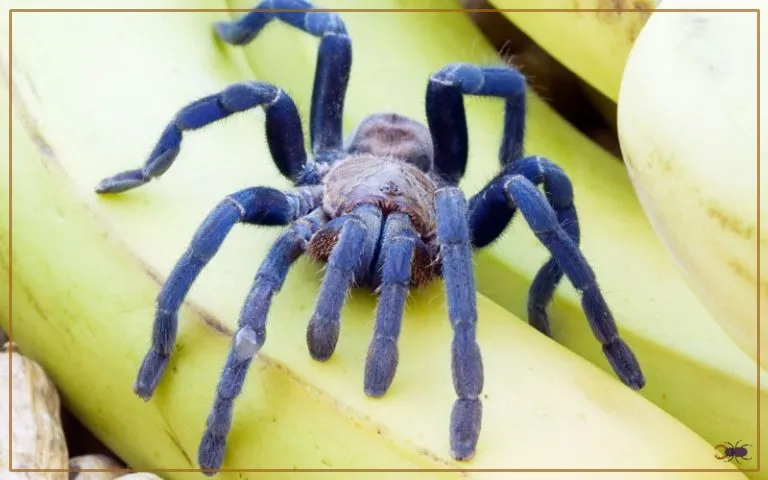
Cobalt Blue Tarantulas prefer a warm environment, mirroring the tropical climates they are native to. The ideal temperature range for these tarantulas is between 75°F and 85°F (24°C to 29°C). You can maintain this temperature using a variety of methods, such as a low-wattage heat lamp or a heat mat attached to the side of the enclosure (not the bottom, as this can overheat the substrate and harm the tarantula). Always monitor the temperature with a reliable thermometer to ensure it stays within the safe range. Avoid placing the enclosure in direct sunlight or near drafts, as these can cause temperature fluctuations. Consistent temperatures are critical for your tarantula’s metabolic processes and overall health.
Essential Setup Items
Water Dish
A shallow water dish is a must-have in your Cobalt Blue Tarantula’s enclosure. It provides a constant source of fresh water, essential for hydration. The water dish should be shallow enough to prevent the tarantula from drowning, especially for younger specimens. Ceramic dishes or plastic lids are good choices, but make sure the dish is stable and won’t tip over easily. Refill the water dish regularly with dechlorinated water, and clean it frequently to prevent the build-up of bacteria. Providing clean water ensures your tarantula can properly hydrate and maintain its health, and it also helps to contribute to the humidity in the enclosure.
Hides and Decorations

Cobalt Blue Tarantulas are often reclusive, and they need a secure place to hide and feel safe. Provide at least one hide, such as a piece of cork bark, a half log, or a commercially available tarantula hide. Place the hide in a corner of the enclosure where the tarantula can retreat. Avoid using decorations with sharp edges or that could potentially trap the tarantula. You can also add other decorations, such as artificial plants or branches, to make the enclosure more visually appealing and provide additional climbing opportunities. However, always prioritize the tarantula’s safety and well-being when adding decorations, as too much can restrict the space.
Ventilation
Proper ventilation is vital to prevent mold growth and maintain air quality within the enclosure. While humidity is important, excessive moisture can lead to fungal infections and other health problems. Ensure the enclosure has adequate ventilation, such as small air vents or a partially screened lid. Avoid completely sealing the enclosure. Good air circulation helps regulate humidity and prevents the build-up of harmful gases. Regularly inspect the enclosure for signs of mold and ensure the substrate isn’t excessively wet. Adequate ventilation, combined with proper humidity control, creates a healthy environment for your Cobalt Blue Tarantula.
Setting Up the Enclosure
Substrate and Decor Placement
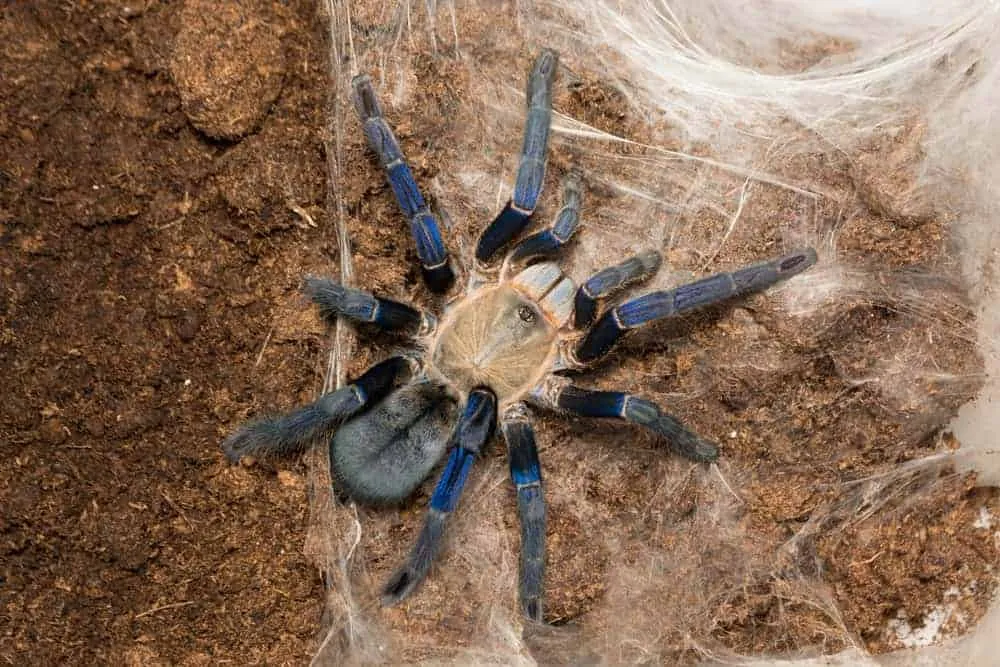
Begin by adding the substrate to the enclosure, creating a layer deep enough for the tarantula to burrow. Moisten the substrate slightly, but avoid making it overly wet. Place the hide and other decorations in the enclosure, creating a natural and visually appealing environment. Arrange the hide in a way that provides the tarantula with a sense of security. Ensure the water dish is easily accessible. The overall setup should mimic the tarantula’s natural environment as closely as possible, providing both functional and aesthetic benefits. Before introducing the tarantula, give the enclosure a few days to settle and stabilize in terms of humidity and temperature.
Watering and Humidity Management
Watering and humidity management is a cornerstone of Cobalt Blue Tarantula care. Regularly mist the enclosure with dechlorinated water, especially on the sides of the enclosure, to maintain humidity levels. Avoid spraying directly onto the tarantula. Monitor the humidity levels with a hygrometer and adjust your misting frequency as needed. In drier environments, you may need to mist more frequently. Ensure the substrate is moist but not waterlogged. Proper humidity control helps the tarantula shed its exoskeleton (molt) successfully and stay healthy. The goal is to replicate the humid tropical conditions this species thrives in.
Introducing the Tarantula
Acclimation Period
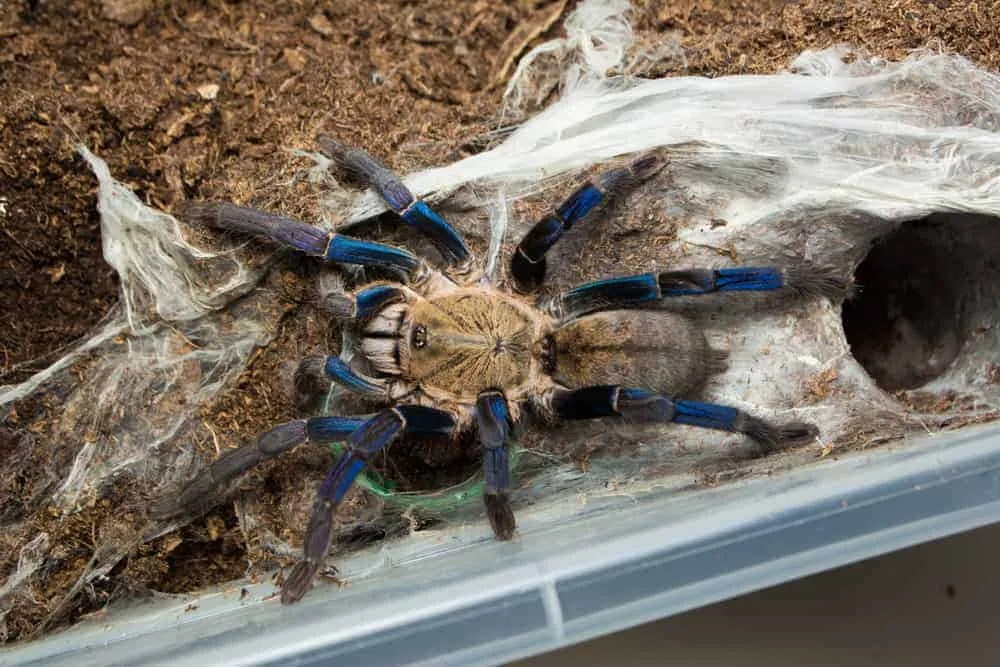
Once you’ve completed setting up the enclosure, it’s time to introduce your Cobalt Blue Tarantula. When you receive your tarantula, place the container it came in inside the enclosure. Allow the tarantula to acclimate to its new environment for a few hours before opening the container. This will minimize stress. Slowly and gently open the container, allowing the tarantula to move into its new home at its own pace. Avoid forcing the tarantula out. Observe the tarantula’s behavior for the first few days to ensure it is settling in well. Provide it with a clean environment with fresh water and wait for it to become accustomed to its new home. Do not handle it during the acclimation period, as stress can be detrimental to its health.
Monitoring and Maintenance
Feeding your Cobalt Blue
Cobalt Blue Tarantulas are insectivores and their diet consists primarily of insects. Feed your tarantula a variety of insects, such as crickets, roaches, mealworms, and occasionally, pre-killed pinky mice, though these should be less frequent. The frequency of feeding depends on the tarantula’s age and size. Young tarantulas can be fed two to three times per week, while adults can be fed once or twice a week. Remove any uneaten food within 24 hours to prevent the build-up of mold and mites. Ensure the insects you feed are gut-loaded with nutritious food prior to feeding, this helps ensure your tarantula receives all of the essential nutrients. Clean water is crucial, always provide a fresh supply.
Cleaning and Maintenance
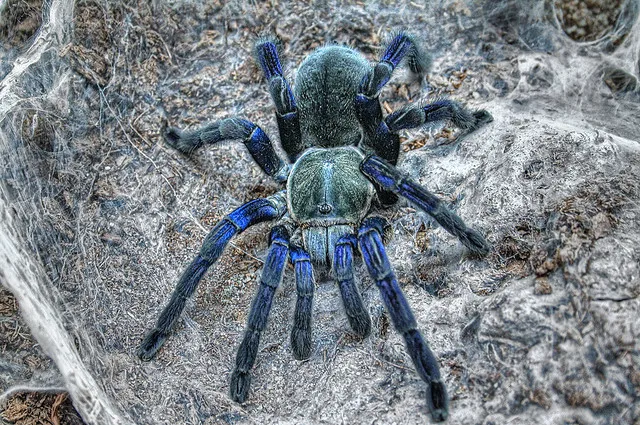
Regular cleaning and maintenance are essential for keeping your Cobalt Blue Tarantula healthy. Spot-clean the enclosure weekly, removing any uneaten food, molts, or feces. Change the water in the water dish at least twice a week, and clean the dish thoroughly. Replace the substrate every 6-12 months, or more frequently if it becomes heavily soiled or moldy. When cleaning the enclosure, be careful not to disturb the tarantula too much. Avoid the use of harsh chemicals or cleaning agents. Regular maintenance creates a healthy environment and prolongs the life of your Cobalt Blue Tarantula.
Troubleshooting Common Issues
Mites and Pests
Mites and other pests can sometimes infest tarantula enclosures, posing a threat to your Cobalt Blue Tarantula. These pests can be introduced through contaminated substrate or feeder insects. Signs of infestation include small, moving organisms on the tarantula or in the enclosure. If you suspect an infestation, isolate the tarantula and thoroughly clean the enclosure. Replace the substrate and all decorations. You can also use mite treatments specifically designed for tarantulas. Preventing infestations is the best approach. Always quarantine new insects before feeding them to your tarantula, and source your substrate from a reputable supplier. Proper ventilation and hygiene also help prevent pests.
Molting Problems
Molting is a natural process where tarantulas shed their exoskeleton to grow. However, sometimes molting can be problematic. Issues include a tarantula getting stuck during molting or failing to shed its exoskeleton completely. The most common cause of molting issues is improper humidity. If your tarantula is having trouble molting, ensure the enclosure has the correct humidity levels. In some cases, assisting a tarantula during a molt may be necessary. However, only experienced keepers should attempt this, as it can be risky. Provide a humid environment and do not disturb the tarantula during the molting process. Patience is key, and allow the tarantula to complete the molt at its own pace. If the tarantula is unable to molt, consult with an experienced keeper or a veterinarian.
